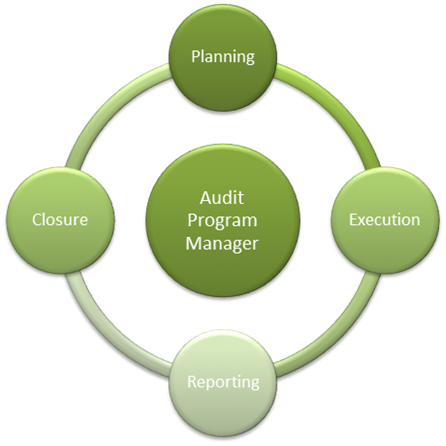- +91 96850-70324
- info@fsqacertification.com
- Office No. 1st floor,Ashima Mall,Bhopal
AUDITING, INSPECTION SECOND PARTY/THIRD PARTY
Auditing is defined as the on-site verification activity, such as inspection or examination, of a process or quality system, to ensure compliance to requirements. An audit can apply to an entire organization or might be specific to a function, process, or production step. Some audits have special administrative purposes, such as auditing documents, risk, or performance, or following up on completed corrective actions.
ISO 19011:2018 defines an audit as a “systematic, independent and documented process for obtaining audit evidence [records, statements of fact or other information which are relevant and verifiable] and evaluating it objectively to determine the extent to which the audit criteria [a set of policies, procedures or requirements] are fulfilled.”

There are three main types of audits:
Process Audit
This type of audit verifies that processes are working within established limits. It evaluates an operation or method against predetermined instructions or standards to measure conformance to these standards and the effectiveness of the instructions.
A process audit may:
- Check conformance to defined requirements such as time, accuracy, temperature, pressure, composition, responsiveness, amperage, and component mixture.
- Examine the resources (equipment, materials, people) applied to transform the inputs into outputs, the environment, the methods (procedures, instructions) followed, and the measures collected to determine process performance.
- Check the adequacy and effectiveness of the process controls established by procedures, work instructions, flowcharts, and training and process specifications.
Product Audit
This type of audit is an examination of a particular product or service, such as hardware, processed material, or software, to evaluate whether it conforms to requirements (i.e., specifications, performance standards, and customer requirements)

System Audit
An audit conducted on a management system. It can be described as a documented activity performed to verify, by examination and evaluation of objective evidence, that applicable elements of the system are appropriate and effective and have been developed, documented, and implemented in accordance and in conjunction with specified requirements.
- A quality management system auditevaluates an existing quality management program to determine its conformance to company policies, contract commitments, and regulatory requirements.
- Similarly, an environmental system auditexamines an environmental management system, a food safety system auditexamines a food safety management system, and safety system audits examine the safety management system.
FIRST-PARTY AUDITS
A first-party audit is performed within an organization to measure its strengths and weaknesses against its own procedures or methods and/or against external standards adopted by (voluntary) or imposed on (mandatory) the organization. A first-party audit is an internal audit conducted by auditors who are employed by the organization being audited but who have no vested interest in the audit results of the area being audited.
SECOND-PARTY AUDITS
A second-party audit is an external audit performed on a supplier by a customer or by a contracted organization on behalf of a customer. A contract is in place, and the goods or services are being, or will be, delivered. Second-party audits are subject to the rules of contract law, as they are providing contractual direction from the customer to the supplier. Second-party audits tend to be more formal than first-party audits because audit results could influence the customer’s purchasing decisions.
THIRD-PARTY AUDITS
A third-party audit is performed by an audit organization independent of the customer-supplier relationship and is free of any conflict of interest. Independence of the audit organization is a key component of a third-party audit. Third-party audits may result in certification, registration, recognition, an award, license approval, a citation, a fine, or a penalty issued by the third-party organization or an interested party.
PERFORMANCE AUDITS

refers to an independent examination of a program, function, operation or the management systems and procedures of a governmental or non-profit entity to assess whether the entity is achieving economy, efficiency and effectiveness in the employment of available resources.
COMPLIANCE AUDITS

A compliance audit is a comprehensive review of an organization’s adherence to regulatory guidelines. Audit reports evaluate the strength and thoroughness of compliance preparations, security policies, user access controls and risk management procedures over the course of a compliance audit.
FOLLOW-UP AUDITS

A Follow up Audit is an audit designed to evaluate the effectiveness of a corrective action that is officially closed after all of the recommendations have been recommended for closure through the follow-up audit process
Audit Closure is when all the planned audit activities have been carried out, or otherwise agreed with the audit client.” Clause 6.7 of ISO 19011 continues by stating that verification of follow-up actions may be part of a subsequent audit.

Audit Planning consists of planning everything that is done in advance by interested parties, such as the auditor, the lead auditor, the client, and the audit program manager, to ensure that the audit complies with the client’s objective. This stage of an audit begins with the decision to conduct the audit and ends when the audit itself begins.
Audit Execution is the data-gathering portion of the audit & covers the time period from arrival at the audit location up to the exit meeting. It consists of multiple activities including on-site audit management, meeting with the auditee, understanding the process and system controls & verifying that these controls work, communicating among team members, & communicating with the auditee.

